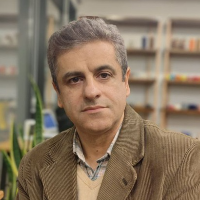Role of Water in the Formation of Fin District and Its Historic Garden: From Regional Planning to Architectural Design
Every garden owes its formation and life to water. Nonetheless, the relation between garden and the region where it’s been located exerts influence upon the role of water. Giving insufficient attention to region, its cultivation, causing vast demolition, changes in gardens’ formation process and not taking the differences among various types very seriously have all led to paying more attention to the interiors. Such unwelcome attention not only has brought about the demolition of historic gardens’ surroundings, but spoiled our understanding of water and qanāts (subterranean canals) as substructures of life in the vast plateau of Iran.In the present article a classic type of garden formed by qanāt has been studied, so that the role of qanāt and its relationship with the formation of garden will be revealed. First, by referring to the connection among garden, cultivation and different types of agriculture and planting, a kind of water-required agriculture in mountainous areas is introduced. The garden and district of Fin are considered an old example for this type of agriculture. Such a type is among the various ones applied in the central plateau of Iran, containing many basins. A study on the historical background of Fin and the features of the earth there demonstrates that the region is an oasis in front of an alluvial fan located on the slope of mountain. It plays a significant role in the formation of the village or habitat of Fin. In this article water sources of Kāshān and the qanāt technology have been studied briefly to show us where the origin of Fin or Solaymān spring is, and how water is transmitted to the Fin. Furthermore, historical geography resources have been examined to demonstrate that the most important features of the district have strong connections with Fin spring. The condition of the district has also been studied during the Qājār era from which accurate information is available. In this case, historical sources help the manifestation of a general picture of different elements formed in the Fin district.In order to complete the mentioned picture, the Fin spring and related hydraulic structures as well as gardens’ surroundings and farms have been studied according to aerial photos and field studies. The result of the study reveals an environmental structure composed of the original historic garden; qanāt series; other gardens including formal ones, garden-houses and fruit gardens; farms; hydraulic structures such as water partings, watermills and levees. A combination of such elements in a piece of land located on desert on the slope of mountain offers the opportunity to live in an arid area. In the last section of the article the role of water would be studied inside gardens and the related hydraulic structures. This section is relevant to the aforementioned topics as well as to qanāt water, however having a different scale. A comparison of the two scales reveals that the role of water is far beyond the garden walls, extending on the area the garden has been located on. The results show as well that all the related elements to qanāt water and the mentioned environment are interconnected
- حق عضویت دریافتی صرف حمایت از نشریات عضو و نگهداری، تکمیل و توسعه مگیران میشود.
- پرداخت حق اشتراک و دانلود مقالات اجازه بازنشر آن در سایر رسانههای چاپی و دیجیتال را به کاربر نمیدهد.


